Current Research Projects
Reaction time intra-individual variability reveals inhibitory deficits in single- and multiple-domain amnestic mild cognitive impairment
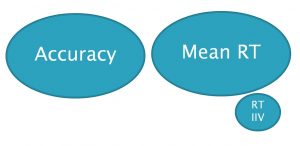
Amnestic mild cognitive impairment (aMCI), a prodromal stage of Alzheimer’s disease and other dementias, is characterized by episodic memory impairment. Recent evidence has shown inhibitory control deficits in aMCI, but the extent of these deficits across inhibitory domains (i.e., response inhibition and interference control) and aMCI subtypes (i.e., single- versus multiple-domain) remains unclear. Few studies have included response time intra-individual variability (RT IIV) in these efforts. This study examined performance on Go-NoGo and Flanker tasks in older adults with mdaMCI, sdaMCI, and healthy controls. In this study, individuals with mdaMCI had higher RT IIV than the other groups on both tasks. We also observed an interference control deficit in mdaMCI and sdaMCI relative to healthy controls, a finding not observed through accuracy or mean RT. Therefore, RT IIV may detect subtle differences in inhibition deficits between aMCI subtypes that may not be evident with conventional behavioral measures. Findings support the supplementary use of RT IIV when assessing early executive function deficits. This study was done in collaboration with the Anderson Lab and findings have been published in the the Journal of Gerontology: Psychological Sciences (link to article found here).
The Effects of Short Term Memory on Auditory Spatial Attention
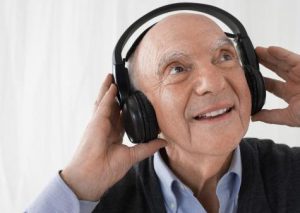
Our experiences can guide our attention which, in turn, may help us to isolate the different competing sounds in our environment. For example, we may not notice the fact that a particular family member always sits on our left at the dinner table—but over time, an association will be formed that makes it easier to isolate this voice from the surrounding sound mixture when other people at the table are talking. Although it has been shown that visual memory can guide attention, very little is known about whether auditory memory can bias attention in hearing. This project aims to test whether these associations—of which we’re not aware—can guide our attention to help us better understand what we hear.
Memory-guided auditory attention is a largely unexplored area. Further elucidating the link between memory and attention will help us better understand memory as a dynamic system that can benefit from, and contribute to, attentional processes. The fact that the experiment examines more natural listening situations will also enable us to adapt it to the world outside the laboratory to aid people with peripheral or central hearing impairment caused by aging, dementia, or trauma.
Enhancing Memory in Healthy Older Adults Using Neurostimulation and Music
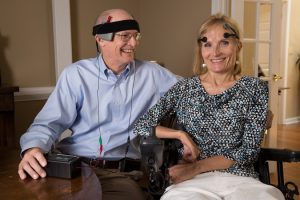
This is the first study to our knowledge combine music listening with brain stimulation and to examine their effects on recognition memory and working memory among healthy older adults. Previous research has demonstrated that listening to music improves the mood and well-being of older adults with dementia, and may also stimulate social interaction by “bringing back” past memories. This project examines the benefits of listening to music to that they enjoyed in the past as well as using transcranial Direct Current Stimulation (tDCS), which is a non-invasive form of brain stimulation that transmits a very low intensity current through different brain regions with minimal to no side effects. Findings from this project have been submitted for publication and is currently under review.
Improving Early Diagnosis of Mild Cognitive Impairment Using Event-Related Potentials
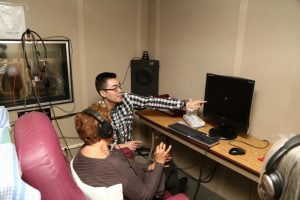
The goal of this study is to develop a test that is accurate, rapid, and cost-effective to measure sensory processing to predict risk of progression to Alzheimer’s Disease. This Multi-Sensory Evoked Potential (MSEP) paradigm records evoked potentials (EPs) in auditory, visual, and tactile stimuli. In the study, brain responses will be recorded in older adults with and without amnestic Mild Cognitive Impairment (aMCI) as revealed by neuropsychological testing. This research has the capacity to detect aMCI using a quick, objective, and easy to use brain measure. Furthermore, these measures can also further the treatment of cognitive impairment by monitoring evidence-based intervention programs that improve memory function.
Perfect Pitch: Effects of Automatic Pitch Encoding on Verbal Interference
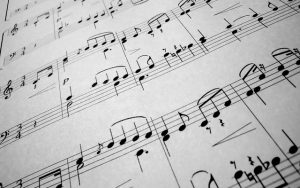
Approximately 1-5 people in 10,000 have perfect pitch: the ability to name the pitch of a note immediately after having just heard it—and this ability is almost twice as prevalent in musicians. This study explores how the brain encodes pitch information in those with perfect pitch, and how musical training can affect our brain’s responses to sound by using electroencephalogrpahy (EEG) and several musical versions of the Stroop Task paradigm with solfège (e.g. do, re, mi). This project is done in collaboration with the Music and Health Research Collaboratory at the University of Toronto. Findings from this study have been published in Frontiers in Neuroscience (link to article found here).
An Event-related Potential Investigation of Inhibitory Control and Time of Day

Compared with young adults, older adults often have difficulty inhibiting irrelevant information—and even more so in those with amnestic mild cognitive impairment (aMCI), a prodromal stage of Alzheimer’s disease and other dementias. This series of studies characterizes how the time of day, age, and Alzheimer’s related changes can impact cognitive control using a neuropsychological battery, cognitive event-related potentials (ERPs), and resting-state encephalography (EEG)—as well as how the time of day can impact the brain’s responses to competing information. The results of the study can inform us of neurophysiological changes in those at risk of Alzheimer’s disease, and how to use the time of day to best tailor interventions, medications, and treatments. This project is done in collaboration with the Anderson lab .
Listening Back in Time: Does Attention to Memory Help Us Hear Speech in Noisy Environments?

“Say what again?!” When we didn’t hear something properly the first time around, we can use prior context (e.g. a semantically related word) to improve listening to speech in noisy environments. We demonstrate a similar benefit even using context presented after the fact. In this project, speech-in-noise comprehension improves when adding a semantically related cue word after a target word masked in white noise. This effect persisted irrespective of whether the cue word was seen or heard. In the case of cues after the target, this benefit lasted even when the cue word was presented up to 4 seconds after the target. These findings strengthen the attention to memory model explaining the cognitive and neural mechanisms behind processing items in auditory memory. Behavioural results of this project have been published in Attention, Perception, & Psychophysics (link to article found here).
Age-related Differences in Orienting Attention to Sound Object Representations

This study examines the effect of age on our ability to orient attention to an item we just heard in short-term memory. Using electroencephalography (EEG) and a memory task, the project has found several brain-wave components thought to index attention to memory. Results suggest an age-related decline in orienting attention to a visually-cued item in auditory short-term memory, and that younger and older adults may be using different strategies for remembering items: older adults may be dividing their attention between all items held in memory rather than selectively focusing their attention on a single item. Results of this project has been published in Neurobiology of Aging (link to article found here).
Orienting Attention to Auditory and Visual Short-Term Memory: Effects of Age, Hearing Loss, and Cognitive Status

When having a conversation with someone, we often “listen back” to what a person just said, with the memory of those sounds becoming the object of our attention. This ability may be particularly important in older adults—especially those with hearing difficulties. This study examines younger and older adults’ ability to reflectively orient items held in visual and auditory short-term memory, and how this ability can be impacted with age, hearing loss, and cognitive status using neuropsychological testing and a battery of hearing assessments. The study suggests older adults are capable of reflectively orienting items held in both visual and auditory short-term memory, but older adults with mild hearing loss are less able to reflectively orient to auditory short-term memory in particular. The results of this study highlight subtle cognitive changes in older adults with just mild hearing loss, suggesting the importance of maintaining hearing health and elucidating the relationship between hearing loss and cognitive decline.
LOCATION
Rotman Research Institute, Baycrest Health Sciences
3560 Bathurst St. Toronto, ON M6A 2E1
© Copyright 2019 | Alain Lab
